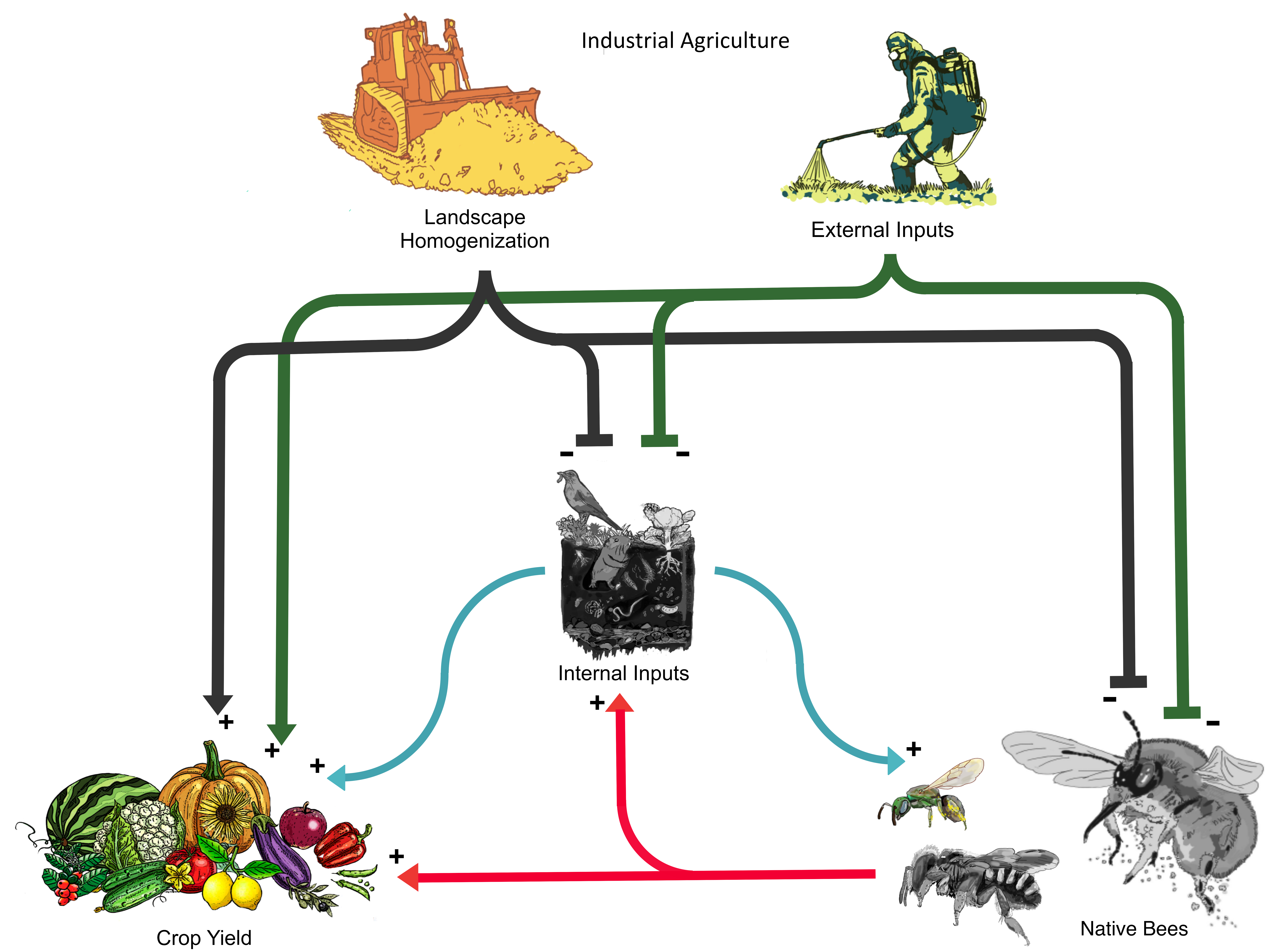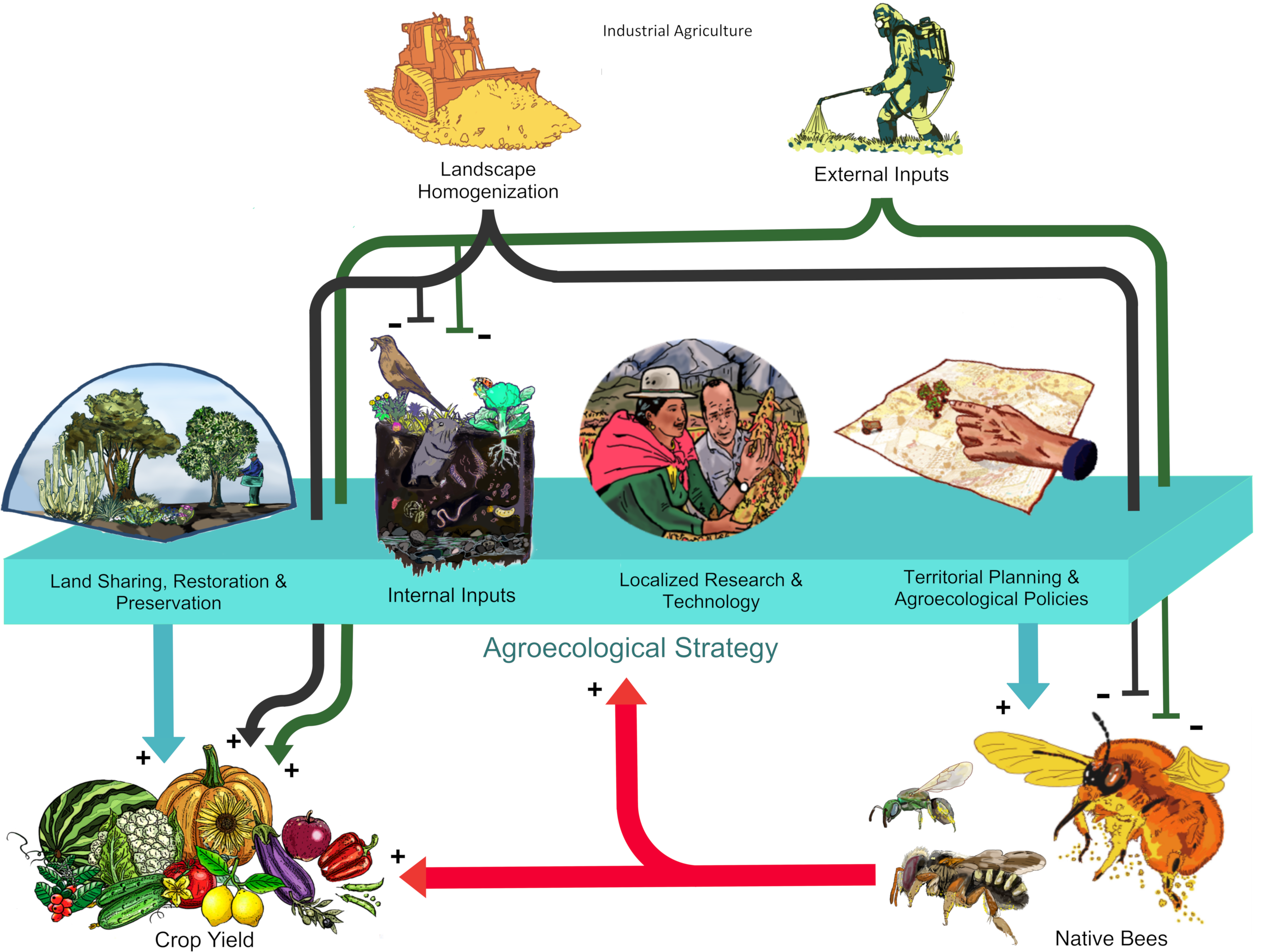1000/1000
Hot
Most Recent

Pollinator biodiversity is greatly affected by industrialized agriculture practices. Agroecological alternatives for food production must be implemented.
 Figure 1. Schematic representation of industrial agriculture intensive management. Arrows and positive sings represent favorable influences between elements depicted by icons and tittles. “T” ending lines and negative signs symbolize unfavorable impacts. Landscape homogenization, the simplification of rural ecosystems that takes place under industrial agriculture, is illustrated with a bulldozer. The application of external inputs such as pesticides, GMOs, and managed exotic biological control agents and pollinators, is shown as an operator spraying agrochemicals. Landscape homogenization and external inputs are used to sustain crop yield production (represented by various fruits) under industrialized schemes. Nonetheless industrial agriculture’s landscape homogenization and external inputs are at the same time causing a decline of local biodiversity (e.g., beneficial microorganisms, plants, and animals), which despite not being recognized by industrial agriculture, are contributing to crop yield as internal inputs (in calypso lines). This component is illustrated by a slide of soil showing different wild lifeforms and their positive influences by calypso color lines. Among beneficial organisms present in agricultural landscapes are wild pollinators, represented by native bees. These are being exemplified in this figure by three specimens (with large to small species) by genera: Bombus, Anthidium, and Lasioglossum native species. Native bees’ positive interactions with crop yield and the remaining internal inputs the other components of this diagram are shown with red lines and arrows. Images in grey highlight detrimental effects on illustrated components (e.g., internal inputs and native bees).
Figure 1. Schematic representation of industrial agriculture intensive management. Arrows and positive sings represent favorable influences between elements depicted by icons and tittles. “T” ending lines and negative signs symbolize unfavorable impacts. Landscape homogenization, the simplification of rural ecosystems that takes place under industrial agriculture, is illustrated with a bulldozer. The application of external inputs such as pesticides, GMOs, and managed exotic biological control agents and pollinators, is shown as an operator spraying agrochemicals. Landscape homogenization and external inputs are used to sustain crop yield production (represented by various fruits) under industrialized schemes. Nonetheless industrial agriculture’s landscape homogenization and external inputs are at the same time causing a decline of local biodiversity (e.g., beneficial microorganisms, plants, and animals), which despite not being recognized by industrial agriculture, are contributing to crop yield as internal inputs (in calypso lines). This component is illustrated by a slide of soil showing different wild lifeforms and their positive influences by calypso color lines. Among beneficial organisms present in agricultural landscapes are wild pollinators, represented by native bees. These are being exemplified in this figure by three specimens (with large to small species) by genera: Bombus, Anthidium, and Lasioglossum native species. Native bees’ positive interactions with crop yield and the remaining internal inputs the other components of this diagram are shown with red lines and arrows. Images in grey highlight detrimental effects on illustrated components (e.g., internal inputs and native bees).